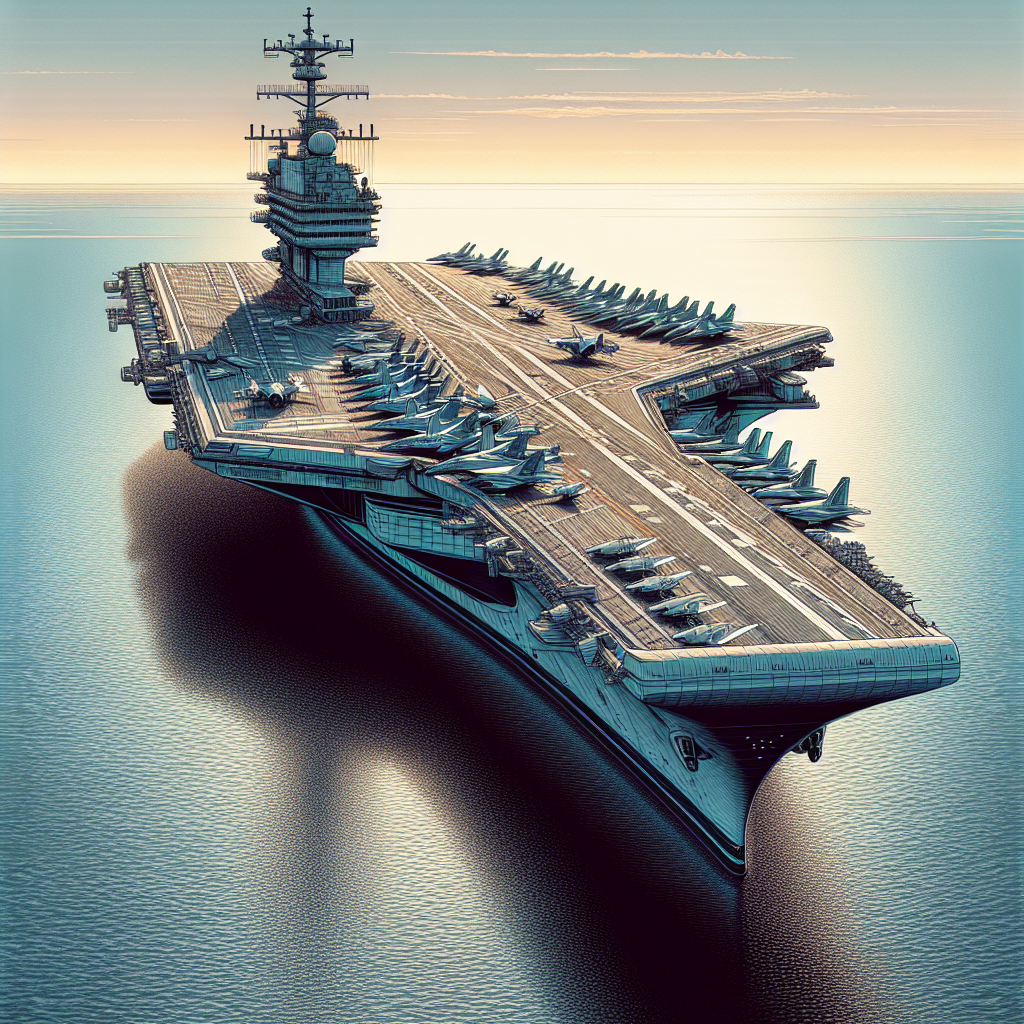The United States’ most advanced aircraft carrier, the USS Gerald R. Ford, is expected to arrive in the waters near Venezuela in the coming days, marking an unusual move that further expands the American military presence in the region. This deployment is a rare showcase of military power by the United States in Latin America in decades.
A question lingers among experts about whether U.S. warplanes will launch from the USS Gerald R. Ford to bomb targets within Venezuela, and potentially apply pressure on the authoritarian President Maduro to step down. However, there remain disagreements on the intentions behind this deployment. Regardless of whether the world’s largest aircraft carrier will carry out the mentioned mission or merely conduct patrols in the Caribbean Sea, its presence alone sends a strong message.
According to reports by The Associated Press, Elizabeth Dickinson, a senior analyst for the International Crisis Group in the Andean region, stated that the deployment of the USS Gerald R. Ford is a core symbol of the U.S. military power displayed once again in Latin America, sparking concerns in Venezuela and the entire region.
“I think everyone is holding their breath, wanting to see how much willingness the U.S. really has to use military force,” Dickinson said.
The deployment of the USS Gerald R. Ford carrier signals a significant phase in the Trump administration’s anti-drug operations in South America. The U.S. military has recently been actively targeting drug trafficking ships in the region.
On Thursday, Secretary of Defense Hagarse officially named this operation “Operation Southern Spear,” emphasizing the increasing importance and persistence of U.S. military presence in the region. Following the arrival of the USS Gerald R. Ford, the U.S. military’s operations in the region will involve nearly 12 naval ships and 12,000 sailors and Marines.
The true intentions behind the U.S. deployment of the USS Gerald R. Ford carrier continue to be a subject of speculation. Historically, the United States has viewed aircraft carriers as tools of deterrence to pressure and influence other countries. These massive carriers, carrying thousands of sailors and dozens of fighter jets, have the capability to strike deep within other countries’ territories.
Secretary of State Pompeo mentioned that the deployment of forces in the region aims to combat “organized drug-terrorist groups” to prevent drug trafficking into the United States. However, Pompeo also pointed out that the U.S. does not recognize Maduro as the leader of Venezuela, who is widely accused of rigging last year’s elections. Pompeo described the Venezuelan government as a “cartel,” openly collaborating with drug traffickers who smuggle drugs into the United States.
Some experts suggest that the deployment of the USS Gerald R. Ford carrier appears to be more about pressuring for a change in the Venezuelan regime rather than combating drug trafficking. Dickinson stated that the carrier does not contribute significantly to combating drug trade, indicating it is likely intended to pressure Venezuela.
A former Navy submariner and current defense analyst at the conservative think tank Hudson Institute, Bryan Clark, expressed that if the Trump administration “does not plan to use the Ford”, they would not have deployed it.
“I believe this administration maintains a very open attitude towards utilizing military force to achieve specific objectives,” Clark said. “I think, unless Maduro steps down in the next month or so, they will want to genuinely carry out some military actions.”
However, some experts argue that the U.S. deployment of the carrier does not necessarily mean an imminent strike against Venezuela, suggesting it could also be a display of military strength.
David Smilde, a professor at Tulane University with over 30 years of research on Venezuela, stated that even with the aircraft carrier, the U.S. does not have enough manpower in the region to launch an invasion.
“This aligns with their desire to show credible military force, which they already possess,” Smilde said. “I do not think the carrier’s presence means they must launch an attack. It simply shows that Trump and Hagarse have not forgotten about this, and they remain committed to overthrowing the Venezuelan regime through a show of force.”
Smilde also mentioned that the political opposition in Venezuela has long conveyed to U.S. officials that a “credible force threat” alone could lead to the downfall of the Maduro government. For Trump, this would be the optimal outcome of this action.
This week, the Venezuelan government declared a “massive” mobilization of military and civilians to defend against potential U.S. attacks. Venezuelan Defense Minister Vladimir Padrino Lopez stated in a statement that all forces – land, air, sea, river, and missile – would participate in a two-day readiness operation “to counter imperialist threats.”
According to Task & Purpose, the deployment of carrier strike groups aligns with the Navy’s Naval Doctrine Publication 1, aiming to “gain and maintain maritime dominance, project power ashore, and support joint operations.” In essence, it serves as the military support behind U.S. foreign policy.
The deployment of the USS Gerald R. Ford carrier provides a new command node and sustained surveillance capabilities for the U.S. Southern Command (SOUTHCOM). Departing from the Caribbean region, its carrier-based aircraft can coordinate with those stationed at the Muniz Air National Guard Base in Puerto Rico and the Roosevelt Roads Naval Base or receive refueling from tankers anchored in Guantanamo Bay. The Guantanamo Bay facility features a deep-water port and an 8,000-foot runway for heavy logistical aircraft takeoffs and landings. This combined setup enables the carrier strike group to maintain almost continuous operational tempo without the need for new base agreements, a significant political advantage in a region wary of foreign military presence.
Despite critics questioning the exorbitant costs of Ford-class carriers, such carriers remain essential for U.S. global power projection. The Chinese navy is currently testing its first Type 003 aircraft carrier, and there are reports of ongoing development of the nuclear-powered Type 004 carrier. Therefore, for both strategic and political considerations, continued investment in Ford-class carriers is necessary for the United States.

